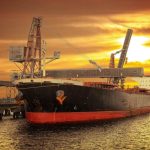The great majority of ships that are neither military vessels nor yachts can be divided into several broad categories: cargo carriers, passenger carriers, industrial ships, service vessels, and noncommercial miscellaneous. Each category can be subdivided, with the first category containing by far the greatest number of subdivisions.
Service vessels
The service ships are mostly tugs or towing vessels whose principal function is to provide propulsive power to other vessels. Most of them serve in harbours and inland waters, and, because the only significant weight they need carry is a propulsion plant and a limited amount of fuel, they are small in size. The towing of massive drilling rigs for the petroleum industry and an occasional ocean salvage operation (e.g., towing a disabled ship) demand craft larger and more seaworthy than the more common inshore service vessels, but oceangoing tugs and towboats are small in number and in size compared with the overwhelmingly more numerous cargo ships.

Miscellaneous
The word miscellaneous has only small scope here. It is intended to encompass classifications such as icebreakers and research vessels, many of which are owned by government. Neither type need be of large size, since no cargo is to be carried. However, icebreakers are usually wide in order to make a wide swath through ice, and they have high propulsive power in order to overcome the resistance of the ice layer. Icebreakers also are characterized by strongly sloping bow profiles, especially near the waterline, so that they can wedge their way up onto thick ice and crack it from the static weight placed upon it. To protect the hull against damage, the waterline of the ship must be reinforced by layers of plating and supported by heavy stiffeners.

Damage to propellers is also an icebreaking hazard. Propellers are usually given protection by a hull geometry that tends to divert ice from them, and they are often built with individually replaceable blades to minimize the cost of repairing damage. Electric transmission of power between engines and propellers is also common practice, since it allows precise control and an easy diversion of power to another propeller from one that may be jammed by chunks of broken ice.
Research vessels are often distinguished externally by cranes and winches for handling nets and small underwater vehicles. Often they are fitted with bow and stern side thrusters in order to enable them to remain in a fixed position relative to the Earth in spite of unfavourable winds and currents. Internally, research vessels are usually characterized by laboratory and living spaces for the research personnel.


